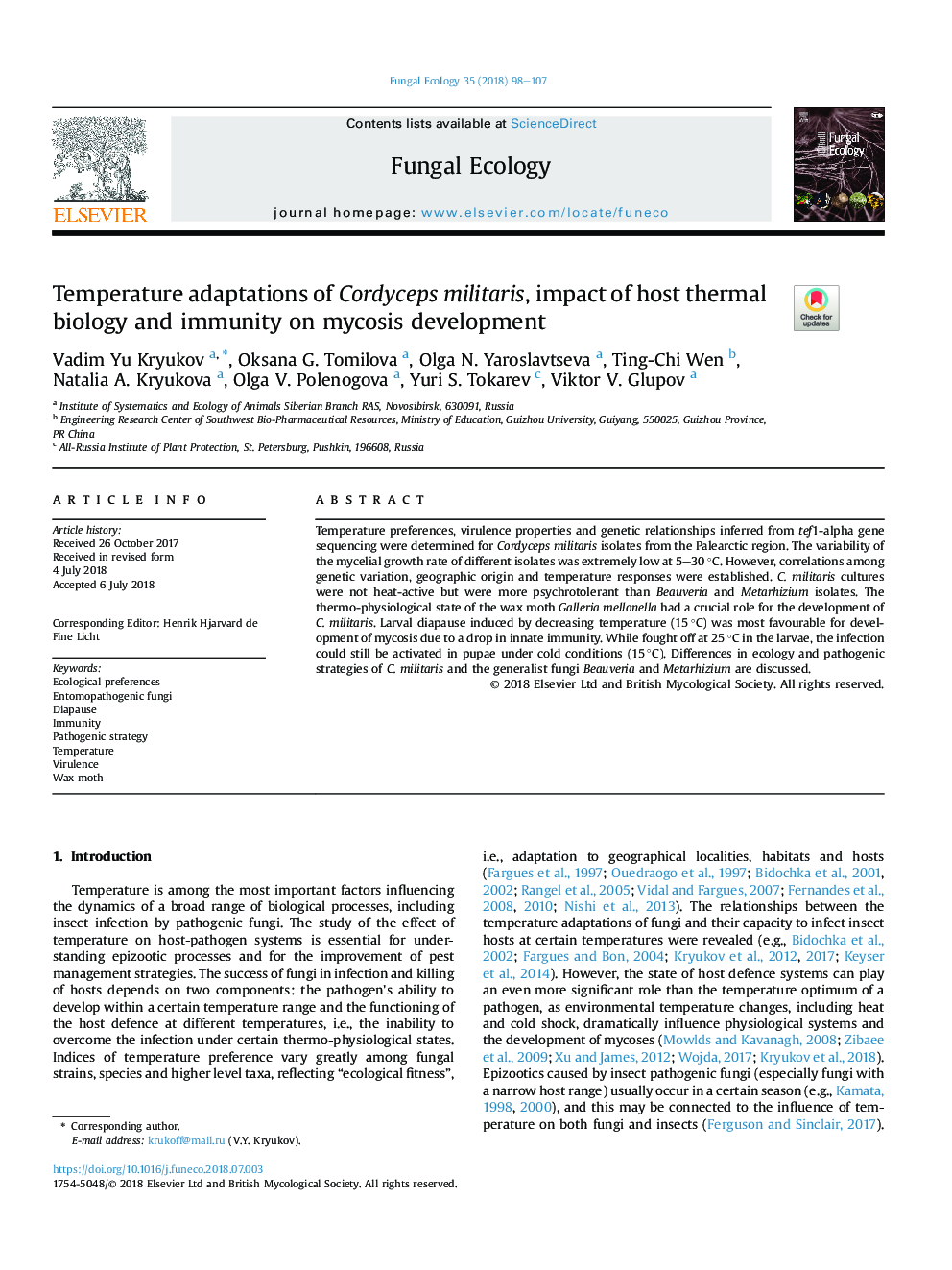| Article ID | Journal | Published Year | Pages | File Type |
|---|---|---|---|---|
| 8384204 | Fungal Ecology | 2018 | 10 Pages |
Abstract
Temperature preferences, virulence properties and genetic relationships inferred from tef1-alpha gene sequencing were determined for Cordyceps militaris isolates from the Palearctic region. The variability of the mycelial growth rate of different isolates was extremely low at 5-30â¯Â°C. However, correlations among genetic variation, geographic origin and temperature responses were established. C. militaris cultures were not heat-active but were more psychrotolerant than Beauveria and Metarhizium isolates. The thermo-physiological state of the wax moth Galleria mellonella had a crucial role for the development of C. militaris. Larval diapause induced by decreasing temperature (15â¯Â°C) was most favourable for development of mycosis due to a drop in innate immunity. While fought off at 25â¯Â°C in the larvae, the infection could still be activated in pupae under cold conditions (15â¯Â°C). Differences in ecology and pathogenic strategies of C. militaris and the generalist fungi Beauveria and Metarhizium are discussed.
Related Topics
Life Sciences
Agricultural and Biological Sciences
Ecology, Evolution, Behavior and Systematics
Authors
Vadim Yu Kryukov, Oksana G. Tomilova, Olga N. Yaroslavtseva, Ting-Chi Wen, Natalia A. Kryukova, Olga V. Polenogova, Yuri S. Tokarev, Viktor V. Glupov,
